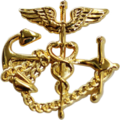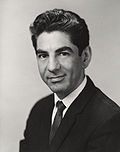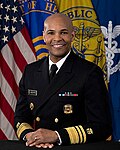| Surgeon General of the United States | |
|---|---|
 Seal of the United States Public Health Service | |
 Flag of the United States surgeon general | |
Incumbent Vacant | |
| U.S. Public Health Service Commissioned Corps | |
| Style | Surgeon General Vice Admiral |
| Abbreviation | SG VADM |
| Reports to | Assistant Secretary for Health |
| Seat | Hubert H. Humphrey Building, United States Department of Health and Human Services (HHS), Washington, D.C. |
| Appointer | President of the United States with United States Senate advice and consent |
| Term length | 4 years |
| Constituting instrument | 42 U.S.C. § 205 and 42 U.S.C. § 207 |
| Formation | March 29, 1871 |
| First holder | John M. Woodworth (as supervising surgeon) |
| Deputy | Deputy Surgeon General |
| Website | www.SurgeonGeneral.gov |
The surgeon general of the United States is the operational head of the United States Public Health Service Commissioned Corps (PHSCC) and thus the leading spokesperson on matters of public health in the federal government of the United States. The surgeon general's office and staff are known as the Office of the Surgeon General (OSG), which is housed within the Office of the Assistant Secretary for Health. [1]
Contents
- Responsibilities
- History
- Service rank
- List of surgeons general of the United States
- See also
- Notes
- References
- External links
The U.S. surgeon general is nominated by the president of the United States and confirmed by the Senate. The surgeon general must be appointed from individuals who are members of the regular corps of the U.S. Public Health Service and have specialized training or significant experience in public health programs. [2] However, there is no time requirement for membership in the Public Health Service before holding the office of the Surgeon General, and nominees traditionally were appointed as members of the Public Health Service and as surgeon general at the same time. The surgeon general serves a four-year term of office and, depending on whether the current assistant secretary for health is a commissioned corps officer, is either the senior or next-most senior uniformed officer of the commissioned corps, holding the rank of vice admiral. [3] [4]





































